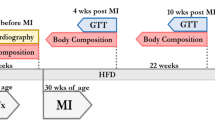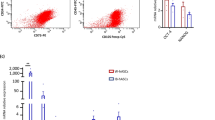Abstract
Background
Obesity, a global challenge, is a complex disorder linked to various diseases. Different kinds of treatments are currently used to treat or control this pandemic. Despite their positive effects on controlling obesity, they still have limitations and side effects including digestive problems, difficulties of daily infusion of some drugs, surgical complications, and weight regain. All these issues cause these conventional methods not to have desirable efficacy. In this regard, brown adipose tissue (BAT) transplantation as a new investigational treatment is proposed, which has beneficial effects with no documented side effect in studies up to now.
Methods
This systematic review protocol was registered in the International Prospective Register of Systematic Reviews (Registration Number: CRD42018110045). The systematical search was conducted on Web of Science, Scopus, PubMed, Embase, and ProQuest databases. The quality assessments in the included studies and data gathering were conducted independently by two authors. The main variables were anthropometric indices including body weight, levels of leptin, IGF-1, glucagon, adiponectin, fasting blood glucose, and UCP-1.
Results
Following the search in mentioned databases, ten articles were entered into this systematic review. In most studies, weight gain and white adipocyte size were reduced in the BAT transplant group. It seems that the transplantation leads to the regeneration of healthy adipose tissue by activating the endogenous BAT.
Conclusions
Since BAT transplantation is one of the possible future treatments of obesity, many studies are conducted to evaluate the outcomes and related procedures precisely, so it can finally step into clinical application.
This is a preview of subscription content, access via your institution
Access options
Subscribe to this journal
Receive 12 print issues and online access
$259.00 per year
only $21.58 per issue
Buy this article
- Purchase on Springer Link
- Instant access to full article PDF
Prices may be subject to local taxes which are calculated during checkout


Similar content being viewed by others
References
Soler-Vazquez MC, Mera P, Zagmutt S, Serra D, Herrero L. New approaches targeting brown adipose tissue transplantation as a therapy in obesity. Biochem Pharmacol. 2018;155:346–55.
Liu X, Zheng Z, Zhu X, Meng M, Li L, Shen Y, et al. Brown adipose tissue transplantation improves whole-body energy metabolism. Cell Res. 2013;23:851–4.
Caballero B. The global epidemic of obesity: an overview. Epidemiol Rev. 2007;29:1–5.
Payab M, Hasani-Ranjbar S, Larijani B. Whether all obese subjects both in metabolic groups and non-metabolic groups should be treated or not. J Diabetes Metab Disord. 2014;13:21.
Foster-Schubert KE, Alfano CM, Duggan CR, Xiao L, Campbell KL, Kong A, et al. Effect of diet and exercise, alone or combined, on weight and body composition in overweight-to-obese postmenopausal women. Obesity. 2012;20:1628–38.
Reddy NL, Tan BK, Barber TM, Randeva HS. Brown adipose tissue: endocrine determinants of function and therapeutic manipulation as a novel treatment strategy for obesity. BMC Obes. 2014;1:13.
Virtanen KA, Lidell ME, Orava J, Heglind M, Westergren R, Niemi T, et al. Functional brown adipose tissue in healthy adults. N Engl J Med. 2009;360:1518–25.
Speliotes EK, Willer CJ, Berndt SI, Monda KL, Thorleifsson G, Jackson AU, et al. Association analyses of 249,796 individuals reveal 18 new loci associated with body mass index. Nat Genet. 2010;42:937–48.
Cannon B, Nedergaard J. Brown adipose tissue: function and physiological significance. Physiol Rev. 2004;84:277–359.
Bartelt A, Bruns OT, Reimer R, Hohenberg H, Ittrich H, Peldschus K, et al. Brown adipose tissue activity controls triglyceride clearance. Nat Med. 2011;17:200–5.
Guerra C, Koza RA, Yamashita H, Walsh K, Kozak LP. Emergence of brown adipocytes in white fat in mice is under genetic control. Effects on body weight and adiposity. J Clin Invest. 1998;102:412–20.
Stanford KI, Middelbeek RJ, Townsend KL, An D, Nygaard EB, Hitchcox KM, et al. Brown adipose tissue regulates glucose homeostasis and insulin sensitivity. J Clin Invest. 2013;123:215–23.
Liu XM, Wang SP, You YL, Meng MH, Zheng ZJ, Dong M, et al. Brown adipose tissue transplantation reverses obesity in ob/ob mice. Endocrinology. 2015;156:2461–9.
Bonet ML, Oliver P, Palou A. Pharmacological and nutritional agents promoting browning of white adipose tissue. Biochim Biophys Acta. 2013;1831:969–85.
Gavrilova O, Marcus-Samuels B, Graham D, Kim JK, Shulman GI, Castle AL, et al. Surgical implantation of adipose tissue reverses diabetes in lipoatrophic mice. J Clin Invest. 2000;105:271–8.
Ailhaud G, Grimaldi P, Negrel R. Cellular and molecular aspects of adipose tissue development. Annu Rev Nutr. 1992;12:207–33.
Arch JR. beta(3)-adrenoceptor agonists: potential, pitfalls and progress. Eur J Pharmacol. 2002;440:99–107.
Gunawardana SC, Piston DW. Reversal of type 1 diabetes in mice by brown adipose tissue transplant. Diabetes. 2012;61:674–82.
Hooijmans CR, Rovers MM, De Vries RB, Leenaars M, Ritskes-Hoitinga M, Langendam MW. SYRCLE’s risk of bias tool for animal studies. BMC Med Res Methodol. 2014;14:43.
Zhu Z, Spicer EG, Gavini CK, Goudjo-Ako AJ, Novak CM, Shi HF. Enhanced sympathetic activity in mice with brown adipose tissue transplantation (transBATation). Physiol Behav. 2014;125:21–9.
Shankar K, Kumar D, Gupta S, Varshney S, Rajan S, Srivastava A, et al. Role of brown adipose tissue in modulating adipose tissue inflammation and insulin resistance in high-fat diet fed mice. Eur J Pharmacol. 2019;854:354–64.
Wu R, Liu X-M, Sun J-G, Chen H, Ma J, Dong M, et al. DJ-1 maintains energy and glucose homeostasis by regulating the function of brown adipose tissue. Cell Discov. 2017;3:16054.
Chen LY, Wang L, Li YJ, Wuang LQ, Liu YF, Pang NB, et al. Transplantation of normal adipose tissue improves blood flow and reduces inflammation in high fat fed mice with hindlimb ischemia. Front Physiol. 2018;9:1–9.
Gunawardana SC, Piston DW. Insulin-independent reversal of type 1 diabetes in nonobese diabetic mice with brown adipose tissue transplant. Am J Physiol Endocrinol Metab. 2015;308:E1043–55.
Aynehchi A, Roshangar L, Mahboob S, Ahmadiasl N, Habibi P, Yousefi H, et al. Transplantation of interscapular brown adipose tissue in rats. Ukr J Ecol. 2018;8:666–70.
Jimenez‐Pavon D, Corral‐Perez J, Sánchez‐Infantes D, Villarroya F, Ruiz JR, Martinez‐Tellez B. Infrared Thermography for estimating supraclavicular skin temperature and BAT activity in humans: a systematic review. Obesity. 2019;27:1932–49.
Kim SH, Plutzky J. Brown fat and browning for the treatment of obesity and related metabolic disorders. Diabetes Metab J. 2016;40:12–21.
Duncan BB, Schmidt MI. The epidemiology of low-grade chronic systemic inflammation and type 2 diabetes. Diabetes Technol Ther. 2006;8:7–17.
Cypess AM, Kahn CR. Brown fat as a therapy for obesity and diabetes. Curr Opin Endocrinol Diabetes Obes. 2010;17:143–9.
Ginter E, Simko V. Brown fat tissue—a potential target to combat obesity. Bratisl Lek Listy. 2012;113:52–6.
LeRoith D, Yakar S. Mechanisms of disease: metabolic effects of growth hormone and insulin-like growth factor 1. Nat Clin Pract Endocrinol Metab. 2007;3:302–10.
Ouchi N, Parker JL, Lugus JJ, Walsh K. Adipokines in inflammation and metabolic disease. Nat Rev Immunol. 2011;11:85–97.
Tao C, Sifuentes A, Holland WL. Regulation of glucose and lipid homeostasis by adiponectin: effects on hepatocytes, pancreatic β cells and adipocytes. Best Pract Res Clin Endocrinol Metab. 2014;28:43–58.
Li L, Wu LL. Adiponectin and interleukin-6 in inflammation-associated disease. Vitam Horm. 2012;90:375–95.
Aydin F, Kaya A, Karapinar L, Kumbaraci M, Imerci A, Karapinar H, et al. IGF-1 increases with hyperbaric oxygen therapy and promotes wound healing in diabetic foot ulcers. J Diabetes Res. 2013;2013:567834.
Jin E, Kim JM, Kim SW. Priming of mononuclear cells with a combination of growth factors enhances wound healing via high angiogenic and engraftment capabilities. J Cell Mol Med. 2013;17:1644–51.
Fu Y, Luo N, Klein RL, Garvey WT. Adiponectin promotes adipocyte differentiation, insulin sensitivity, and lipid accumulation. J Lipid Res. 2005;46:1369–79.
Luo N, Liu J, Chung BH, Yang Q, Klein RL, Garvey WT, et al. Macrophage adiponectin expression improves insulin sensitivity and protects against inflammation and atherosclerosis. Diabetes. 2010;59:791–9.
Wang MY, Chen L, Clark GO, Lee Y, Stevens RD, Ilkayeva OR, et al. Leptin therapy in insulin-deficient type I diabetes. Proc Natl Acad Sci USA. 2010;107:4813–9.
Dunger D, Yuen K, Ong K. Insulin-like growth factor I and impaired glucose tolerance. Horm Res. 2004;62 Suppl 1 :101–7.
Wensveen FM, Jelenčić V, Valentić S, Šestan M, Wensveen TT, Theurich S, et al. NK cells link obesity-induced adipose stress to inflammation and insulin resistance. Nat Immunol. 2015;16:376.
White JD, Dewal RS, Stanford KI. The beneficial effects of brown adipose tissue transplantation. Mol Aspects of Med. 2019;68:74–81.
Acknowledgements
Implementation of this study was sponsored by Tehran University of Medical Sciences (Endocrinology and Metabolism Research Center).
Author information
Authors and Affiliations
Contributions
M,P, participated in the study design, drafting of the paper, and had significant role in development of the selection criteria and data extraction criteria. N,F, M,A, M,H, M,A, and M,S,H, contributed to the development of the selection criteria, the risk of bias assessment strategy, data extraction criteria, and drafting of the paper. AT-B provided final approval of the version to publish. H,G, and F,K,H, developed the search strategy. B,L, participated in critical review. MA participated in the study design and interpretation. BA supervised the project from scientific view of point and advised on experimental design. All authors read, provided feedback, and approved the final paper.
Corresponding author
Ethics declarations
Conflict of interest
The authors declare that they have no conflict of interest.
Additional information
Publisher’s note Springer Nature remains neutral with regard to jurisdictional claims in published maps and institutional affiliations.
Rights and permissions
About this article
Cite this article
Payab, M., Abedi, M., Foroughi Heravani, N. et al. Brown adipose tissue transplantation as a novel alternative to obesity treatment: a systematic review. Int J Obes 45, 109–121 (2021). https://doi.org/10.1038/s41366-020-0616-5
Received:
Revised:
Accepted:
Published:
Issue Date:
DOI: https://doi.org/10.1038/s41366-020-0616-5
This article is cited by
-
Brown Adipose Tissue Promotes Autologous Fat Grafts Retention Possibly Through Inhibiting Wnt/β-Catenin Pathway
Aesthetic Plastic Surgery (2024)
-
Brown adipose tissue and alzheimer’s disease
Metabolic Brain Disease (2023)
-
Advancement of Organoid Technology in Regenerative Medicine
Regenerative Engineering and Translational Medicine (2023)
-
Cooling down with Entresto. Can sacubitril/valsartan combination enhance browning more than coldness?
Diabetology & Metabolic Syndrome (2022)
-
The endocrine role of brown adipose tissue: An update on actors and actions
Reviews in Endocrine and Metabolic Disorders (2022)



